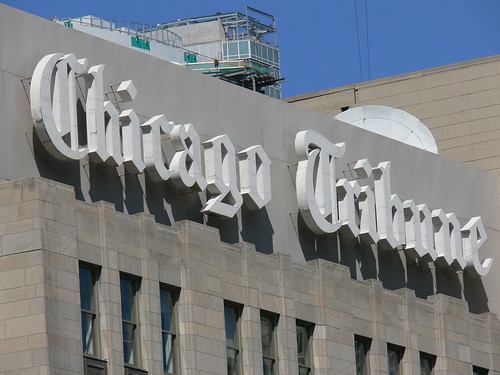Nolter offers a high-level look at the financial problems and opportunities facing the newspaper industry today. A couple of interesting themes emerge in the article that beg for a closer look, namely the FCC’s curious 180-degree turnaround and the concept of ephemeral media brands as valuable assets; there are even a few pithy quotes from the venerable Dave Morgan of RealMedia and Tacoda.
Nolter raises the very interesting notion that the previous FCC policy to regulate local media is becoming passe.

The cost of doing business is the same if not higher for newspapers (labor + newsprint) yet the revenues are long gone. Saddled with debt from propping up their businesses, they are now dropping like flies and clearly getting very desperate. Many newspaper companies will be forced to offer online-only products, limited print runs and some may shut down altogether.
Ironically, these same high-minded voices that prompted the FCC’s inane rules to begin with are now actually suggesting that local TV/radio stations buy the newspapers to keep them in business! Apparently, it is now OK to consolidate operations within a local market because of journalism’s higher-purpose not to mention saving jobs. Considering the political bent of the soon-to-be-unemployed highly-unionized newspaper manufacturing workers and journalists, one can guess what the the new do-gooder administration will do next. Prepare for the sappy journalism paeans and the FCC’s rules to lighten up, if not more creative government-bailout schemes for the well-connected.
 Trusted Brands
Trusted Brands
The other really interesting aspect brought up by Nolter is the actual value of newspaper’s brands.
Specifically, it’s the credibility and trust borrowed from their traditional offline business. All those years of news reporting did have an impact – inuring or accruing to the the newspaper’s brand equity. From a financial analysis standpoint, such branding is often associated with that balance sheet intangible – goodwill. While it is true that technically, goodwill is just the difference between book value and market value these media brands haven’t disappeared either nor has their connection to their locales either. It is true that their prospects have both worsened and capital has become scarcer at the same time. Clearly, not a good place to be.
However, there is an arbitrage upside. Many have already gone negative in terms of goodwill, yet this has made them into financial targets. In the online media business, a newspaper’s brand name is probably their biggest asset and very bankable to both advertising agencies, local marketers and local audiences. Yet, to tap that online brand equity without being dragged down by an business model – the old management culture, legacy infrastructure needs to go…fast. The sclerotic thinking and corporate culture’s that allowed such obsolescence to exist are going to feel it. Expect more unusual bedfellows in creative destruction type deals, like Sam Zell and Tribune as well as Carlos Slim’s debt/warrant financing of The New York Times.
With newspaper jobs and all the associated votes now at stake, the diversity of media ownership pabulum is going to go out the door. It seems that minimal FCC regulation 10-15 years ago would have allowed the consumer and the marketplace to sort out this mess – not Congress, the FCC and ultimately the taxpayer.
All told, this situation brings to mind the classic Ted Levit business school case-study, Marketing Myopia. Levit’s article on the railroad industry of the 50s was spot-on; it spawned the thought-provoking question for managers and owners – what business are they really in? For railroads, it wasn’t the physical trains or railroads. Instead, it was providing transportation for their industrial customers. That was the problem that the railroad companies solved for their customers and therefore the “solution” they essentially sold.
Turns out for newspapers, their business is really the news and not the paper part.

